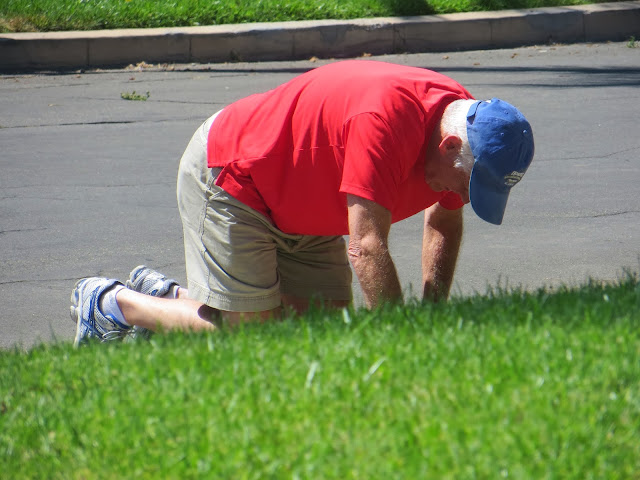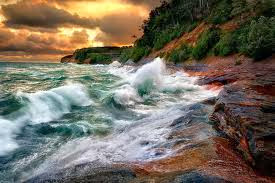We had a wonderful trip, one with life long memories, but as we got closer to home, we reflected on the journey and shared our thoughts.
This trip was so much different than the one we took to Alaska. On the Alaskan trip, once we crossed the Canadian border, we had virtually no destinations or obligations in mind, other than a short reservation in Denali and meeting a cruise ship in Skagway. We also had a goal of being on the Arctic Circle on the longest day of the year.
On this trip, we had obligations from the start! As people found out we were traveling, they asked if we were headed their way. Once we said yes, they wanted to know when we would get there, how long we would stay, what we wanted to see and do, etc. There were many people we wanted to see, some we'd never met like relatives in North Carolina and Virginia. We wanted to see old friends, see where people had relocated. etc.
We also had our calendars marked for our granddaughter's graduation in New York in late May, but then added in a family rendezvous in the Puget Sound area of Washington State for the 4th of July.
Our plans to go to the Canadian Maritimes quickly dissipated as we needed to head across country. We loved every visit we made, but at the same time, we simply didn't have the time to linger at places we would have liked to explore.
Our trip to Nebraska took us almost half way BACK across country, although we wouldn't have made the trip without stopping to see my sister.
Would we do it again?
We're glad we did it, but no, we would not plan a trip that extensive, with that many plans. Our next trips will be much shorter, with specific destinations and plans to stay longer at places we think look interesting, and when the mood strikes.
We had two small glitches in our otherwise perfect trip.
One was a problem with our camper. When we got to Nebraska, John took the camper off the truck, and when he started to fill the water tank, he heard popping sounds. It was the rivets that held up the flooring on the camper. Kind of like the Titanic, they just kept popping!
He was able to reinforce the bottom with steel bars, and he put a minimum amount of water in the tank. A trip back to the Lance camper factory in Lancaster, CA after we got home resulted in a new bottom, and we are good to go. He was told at the factory that it was simply the result of wear and tear plus weight. So we have made a vow to pack lighter the next trip! And not put too much water in the tank.
And last, but not least, while we were in Nebraska, John went on line and discovered that our utility bill had skyrocketed at home. He called SDG&E and was told it was the gas bill, and it was likely there was a hot water leak somewhere. Our housesitters couldn't find anything, and neither could our son until he pulled up a trap door in a hallway, and water and steam whooshed out! The housesitters were able to move out immediately, and the water was shut off until we got home and a plumber repaired the line.
When we drove up, the first thing John did, without even entering the house, was go immediately to the street to take a look at the water meter.
His body language says it all. We did indeed have a massive sudden leak that did major damage to our house, damage that would take two and a half months to repair.
But that's a story for another day! It didn't ruin our memorable trip, and although we arrived home a few days earlier than we had planned, the last leg of the trip was through very hot, dry dessert, much of which we'd traversed before, and which presented nothing we wanted to stop and see.
Thus ended the journey of the Traveling Roadmantics!










































